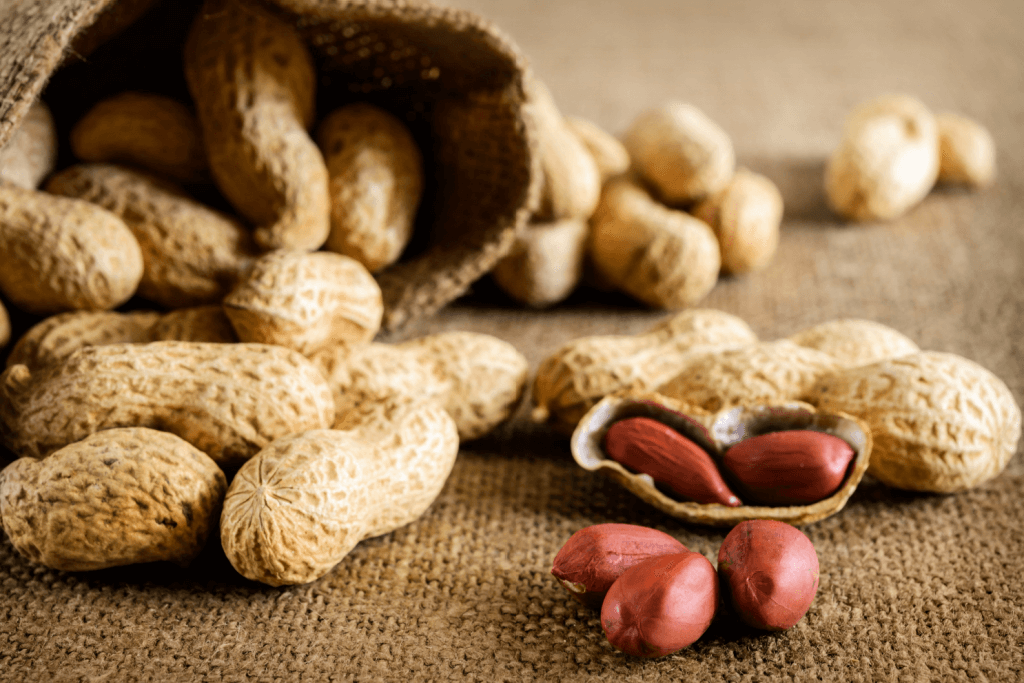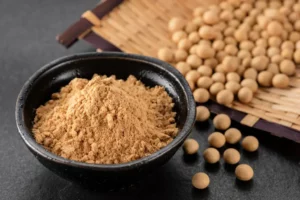Peanuts in Japan are not just a humble legume; they are a story of culinary evolution and cultural fusion, from their late 19th-century introduction to becoming a beloved ingredient in a wide array of traditional and modern Japanese dishes.
Table of Contents
ToggleWhen were peanuts cultivated in Japan?
In 1874, Japan started growing peanuts for the first time, a big deal for their farming history. Before that, they mainly got peanuts from China and didn’t grow them locally. The influence of Americans and Europeans in the late 1800s introduced peanuts to Japan. This introduction was essential in making peanuts popular and growing them in Japan.
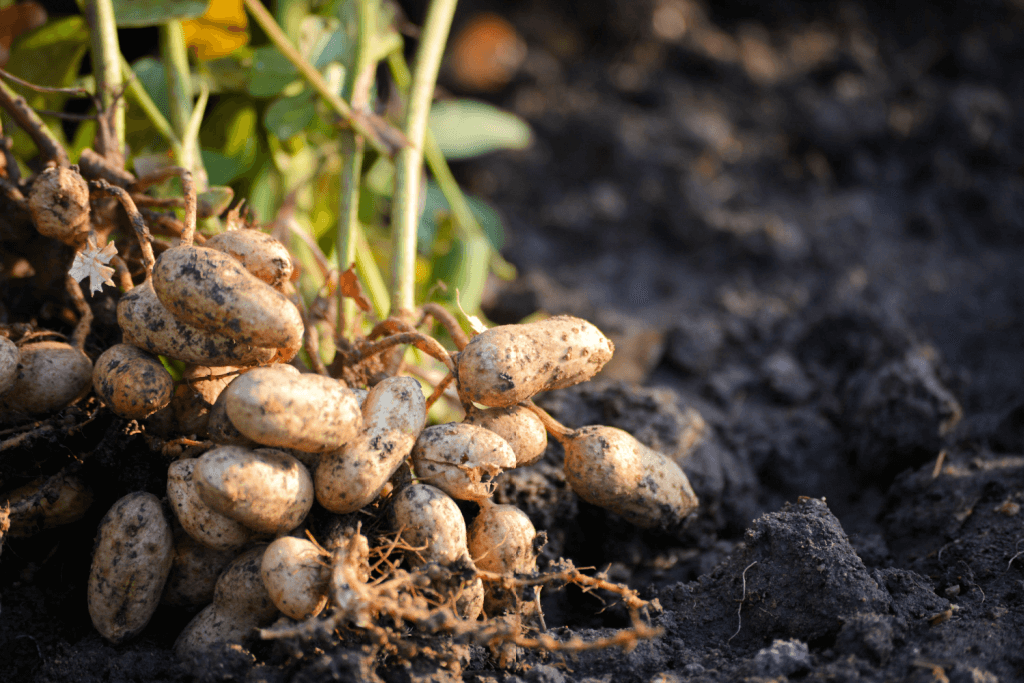
After introducing peanuts, an increasing number of farmers in Japan began to grow them. Consequently, people began to use peanuts in all sorts of Japanese dishes. Peanuts also became a significant crop in places where the climate was suitable. Nowadays, you can find peanuts in many traditional Japanese foods, snacks, and new dishes. This shows how adaptable and integrated peanuts have become in Japanese food culture. Therefore, the shift from importing peanuts to growing them in Japan is an excellent example of how food culture changes through sharing ideas and trying out new ways of farming.
Which prefectures have the best peanuts in Japan?
Regarding the best peanuts in Japan, a few prefectures stand out for their peanut production. Some of the top peanut-producing regions in Japan include Chiba, Kumamoto, and Saga prefectures. Moreover, these areas have favorable climates and soil conditions for peanut cultivation, which helps produce high-quality peanuts.
Chiba Prefecture, located in the Kanto region, is especially famous for its sweet and crunchy peanuts. Chiba’s warm climate and well-drained sandy soil are ideal for growing delicious peanuts. Additionally, Kumamoto Prefecture, in the Kyushu region, is also famous for its peanuts, known for their rich flavor and texture. This is because the region’s volcanic soil and ample sunlight contribute to the quality of Kumamoto’s peanuts.
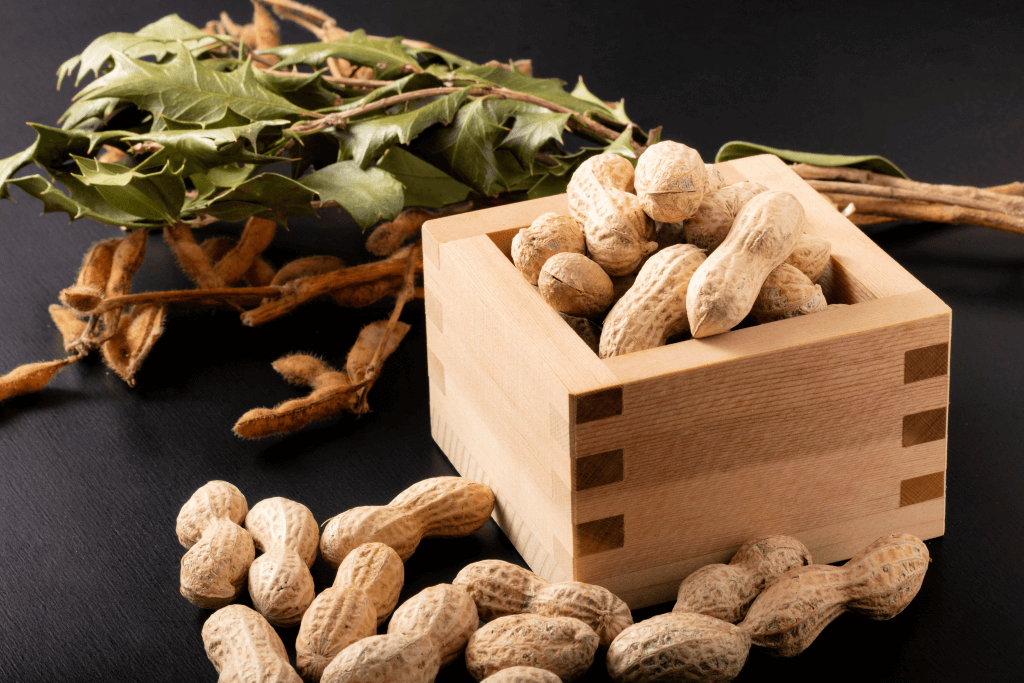
Saga Prefecture, also in Kyushu, is another notable peanut-producing area. More specifically, its peanuts are known for their size and taste. The combination of fertile soil and careful cultivation practices has made Saga a hub for premium peanuts.
So, if you’re looking for the best peanuts in Japan, watch for those from Chiba, Kumamoto, and Saga prefectures. All in all, these regions have a long history of peanut cultivation and are renowned for their top-quality peanut products.
Are you interested in enjoying more peanut snacks from Japan? Check out Sakuraco! Sakuraco delivers traditional Japanese snacks, teas, sweets, and snacks from local Japanese makers directly to your door so you can enjoy the latest treats directly from Japan!
Which Japanese snacks use peanuts?
Peanuts play a prominent role in various Japanese snacks and culinary delights. This is because they’re a versatile ingredient that adds flavor and texture to many traditional and modern treats. Here are some popular Japanese snacks that use peanuts.
Kakipi
Kakipi, a beloved Japanese snack, is a delightful combination of roasted peanuts enveloped in a crunchy and flavorful batter. The secret to its popularity lies in the perfect blend of a salty, savory coating and the nutty goodness of the peanuts at its core. As a result, this delectable harmony of flavors and textures creates an irresistible snack that has captured the hearts of many snack enthusiasts in Japan and beyond.
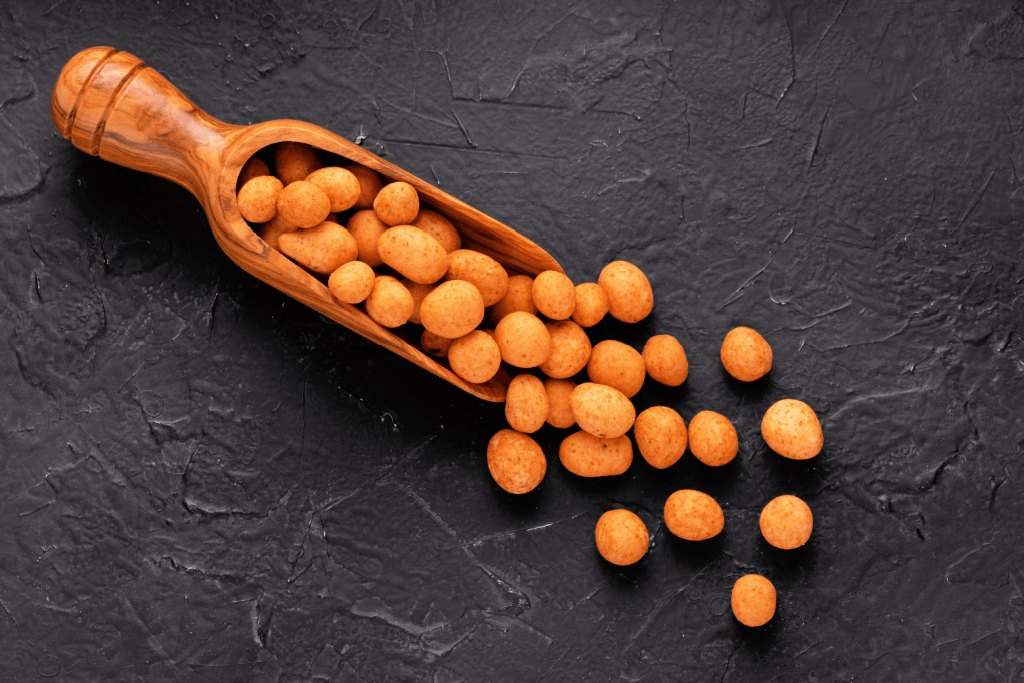
Whether enjoyed as a quick bite on the go or as a companion to leisurely tea time, Kakipi’s unique taste profile makes it a cherished part of Japanese snack culture, offering a satisfying and satisfyingly crunchy treat for all to savor.
Arare
Arare, a famous Japanese rice cracker, frequently features the delightful addition of peanuts. These small, bite-sized snacks are known for their diverse shapes and flavors, making them a favorite choice for snack lovers. The integration of peanuts into the arare formula also adds a layer of complexity to the snacking experience.
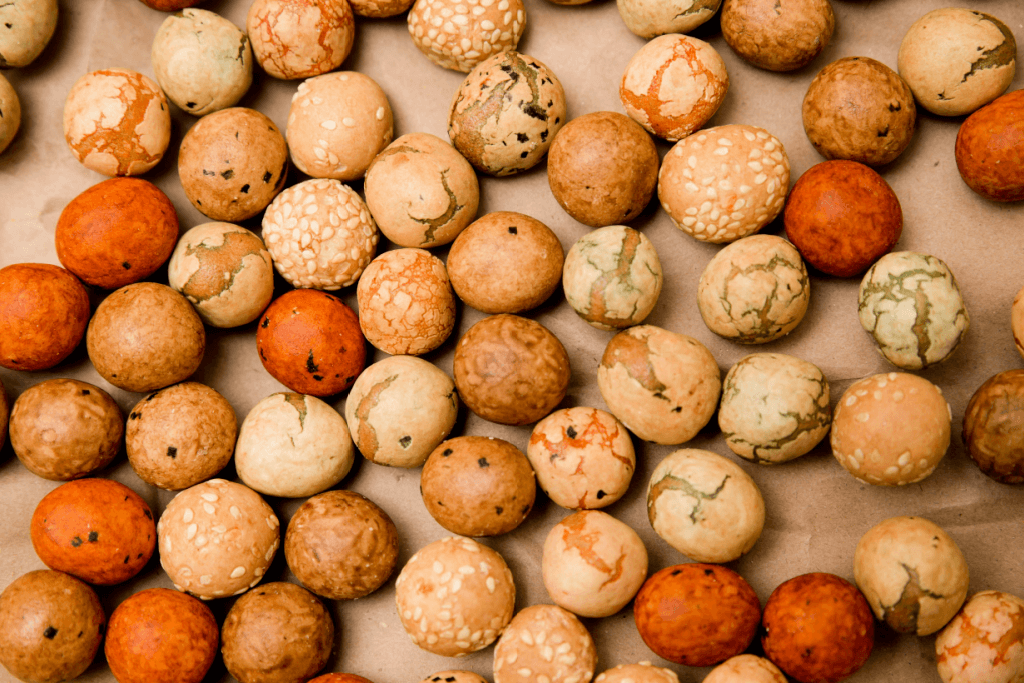
With every bite, you encounter a satisfying crunch, while the nutty taste of the peanuts enhances the overall flavor profile. Arare is a source of crispy enjoyment and a showcase of the artistry that goes into Japanese snack creation, offering a delightful blend of textures and tastes that leave a lasting impression on those who indulge in these treats.
Kaki no Tane
Kaki no tane, which translates to “persimmon seeds,” is a well-loved Japanese snack with a unique flavor profile. Generally, this snack typically comprises crescent-shaped rice crackers generously paired with peanuts. The intriguing interplay of tastes and textures makes kaki no tane stand out.
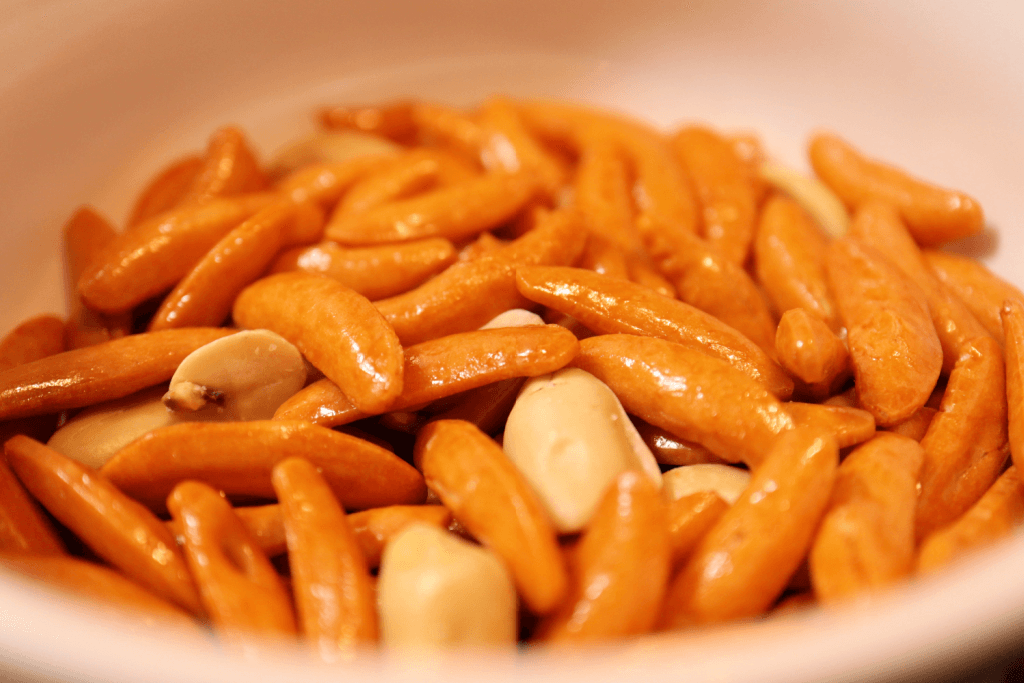
The rice crackers are often spicy and infused with soy flavor, providing a zesty kick. In contrast, peanuts contribute a milder, nutty essence. This combination results in a signature taste that encapsulates the essence of sweet and savory, hot and mild, all in a single bite. Kaki no tane has earned a special place in Japanese snacking culture, offering a delightful balance of flavors that keeps snack enthusiasts reaching for more.
Why should I try peanuts from Japan?
You should try peanuts from Japan because they encapsulate a culinary journey filled with history, artistry, and a unique flavor experience. These peanuts, featured in a variety of beloved Japanese snacks, offer a delightful blend of textures and tastes, from the savory to the spicy, complemented by the mild nuttiness of peanuts.
By indulging in these Japanese peanuts, you’re not just savoring a snack but immersing yourself in the rich and diverse tapestry of Japanese snacking culture. So, the next time you search for a new culinary adventure, consider adding Japanese peanuts. Have you already tried them? Share your thoughts in the comments below!


